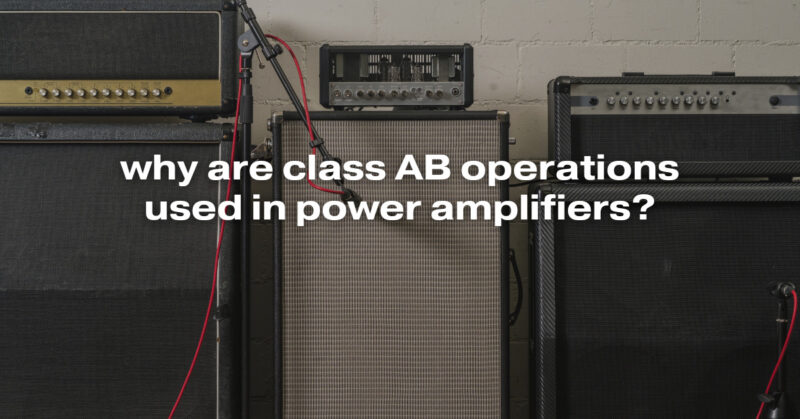Class AB operation is commonly used in power amplifiers for a variety of reasons, as it offers a balanced compromise between the characteristics of Class A and Class B operation. Here are the key reasons why Class AB operation is preferred in power amplifiers:
- Efficiency: Class AB amplifiers are more efficient than Class A amplifiers. In Class A amplifiers, transistors are continuously conducting, leading to high power dissipation in the form of heat, even when there is no input signal. Class AB amplifiers, on the other hand, use a push-pull configuration in which each transistor conducts for only a portion of the input cycle. This reduced conduction time results in significantly lower quiescent (idle) power consumption and less heat generation.
- Reduced Heat Generation: The lower heat generation in Class AB amplifiers allows for more compact and cost-effective heatsinking solutions. This makes them practical for a wide range of applications where managing heat is a concern.
- Improved Efficiency at Low Power: Class AB amplifiers are most efficient when amplifying signals at moderate to high power levels. However, they still offer decent efficiency at lower power levels compared to Class A amplifiers, making them suitable for a broad range of audio applications.
- Linearity: Class AB amplifiers provide good linearity and low distortion. While not as linear as Class A amplifiers, they offer excellent audio fidelity for the majority of audio signals, including music and speech.
- Reduced Crossover Distortion: Crossover distortion, which occurs at the point where the output switches from one transistor to the other, is a common issue in Class B amplifiers. Class AB amplifiers incorporate a small overlap in transistor conduction to reduce crossover distortion, resulting in smoother transitions between transistors and improved sound quality.
- Power Handling Capability: Class AB amplifiers can handle higher power levels than Class A amplifiers with similar transistor sizes and heatsinking. This makes them suitable for driving speakers with higher wattage requirements.
- Versatility: Class AB amplifiers are versatile and can be designed for a wide range of applications, from consumer audio and automotive sound systems to professional audio equipment and public address systems.
- Reasonable Biasing: Class AB amplifiers can be biased to provide a balance between efficiency and linearity. The biasing point determines the amount of overlap between the transistors’ conduction regions, allowing designers to tailor the amplifier’s performance to meet specific requirements.
- Wide Range of Applications: Class AB amplifiers find use in various applications due to their balanced performance characteristics. They are suitable for both low-power and high-power audio amplification needs, making them one of the most common choices for power amplifiers.
In summary, Class AB operation strikes a balance between the high linearity of Class A amplifiers and the efficiency of Class B amplifiers. This balance makes Class AB amplifiers practical and versatile solutions for a wide range of audio applications where both audio fidelity and efficiency are important considerations.


